AirBeeNBee
Food is not enough, pollinators also need a shelter to live and nest.
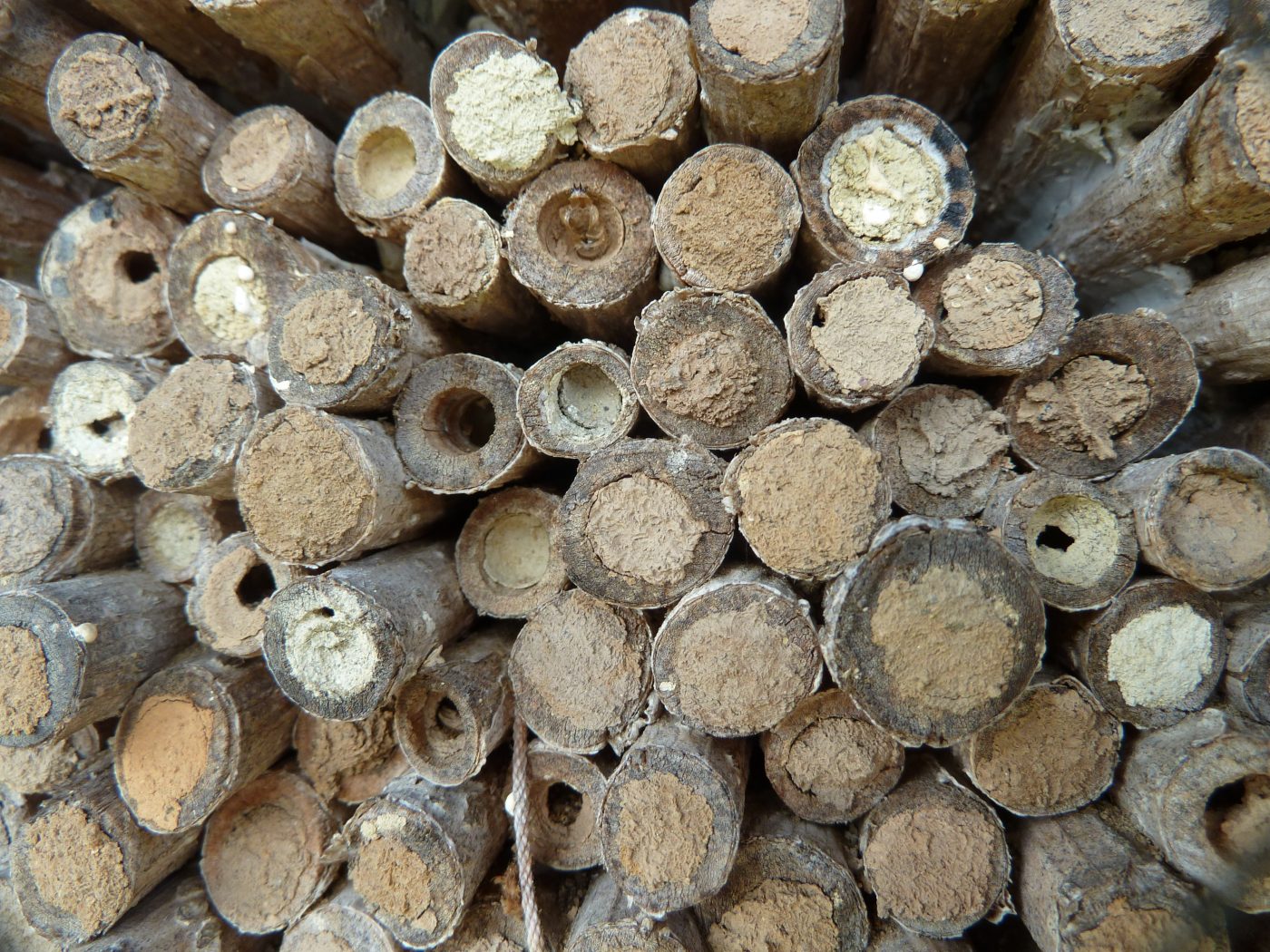
Shelter for the wild cousins
As pollinators the wild cousins of the honeybee provide a large contribution to the diversity in your garden. They are a lot more peaceful then their relatives, too – many of them do not even have a stinger. That’s why they are the best inhabitants for your balcony and garden. So get active and create a bee home!
In order to let the tenants feel really comfortable, there are of course a few requirements to pay attention to:
- There should be forage crops in the vicinity fitting the lifecycle of the promoted species
- Adequate building material like clay, soil and deadwood is to be used.
- The location should be chosen carefully. Most species prefer a nesting location that is sunny, dry and southward. Only bumblebees should be placed as cool as possible.
- Constuctions should be deep-seated.
- To prevent injuries of the inhabitants cut edges should be polished with sandpaper e.g.
What type of housing is required?
Not all bees and all wasps are the same. Especially, the distinction between solitary and social species is important, to better understand the needs of the species when choosing the nesting site. We have presented the different ways of life of solitary and social wild bees in more detail here. You can find more details about wasps and their different life plans here.
Solitary pollinators
Bees and wasps that do not live in colonies and where each female takes care of small nests for their brood are called solitary. The vast majority of them nest in loose, sandy soil, like in the joints of stones/tiles, some species nest in the classic “hotel” and others in pithy stems. If the conditions are good, ground nests often form small communities. They like it sunny and we can support them by using various measures.
Social pollinators
Bumblebees and social wasps form colonies. Therefore, they cannot nest in narrow tubes or corridors and need a larger volume of space for their colony. While wasps usually build their own nests out of paper mache, bumblebees depend on the preparatory work of other species. They use burrows made by mice or squirrels, dig themselves into loose compost heaps or populate a bird nest box. Bumblebee nests must always be protected from overheating.
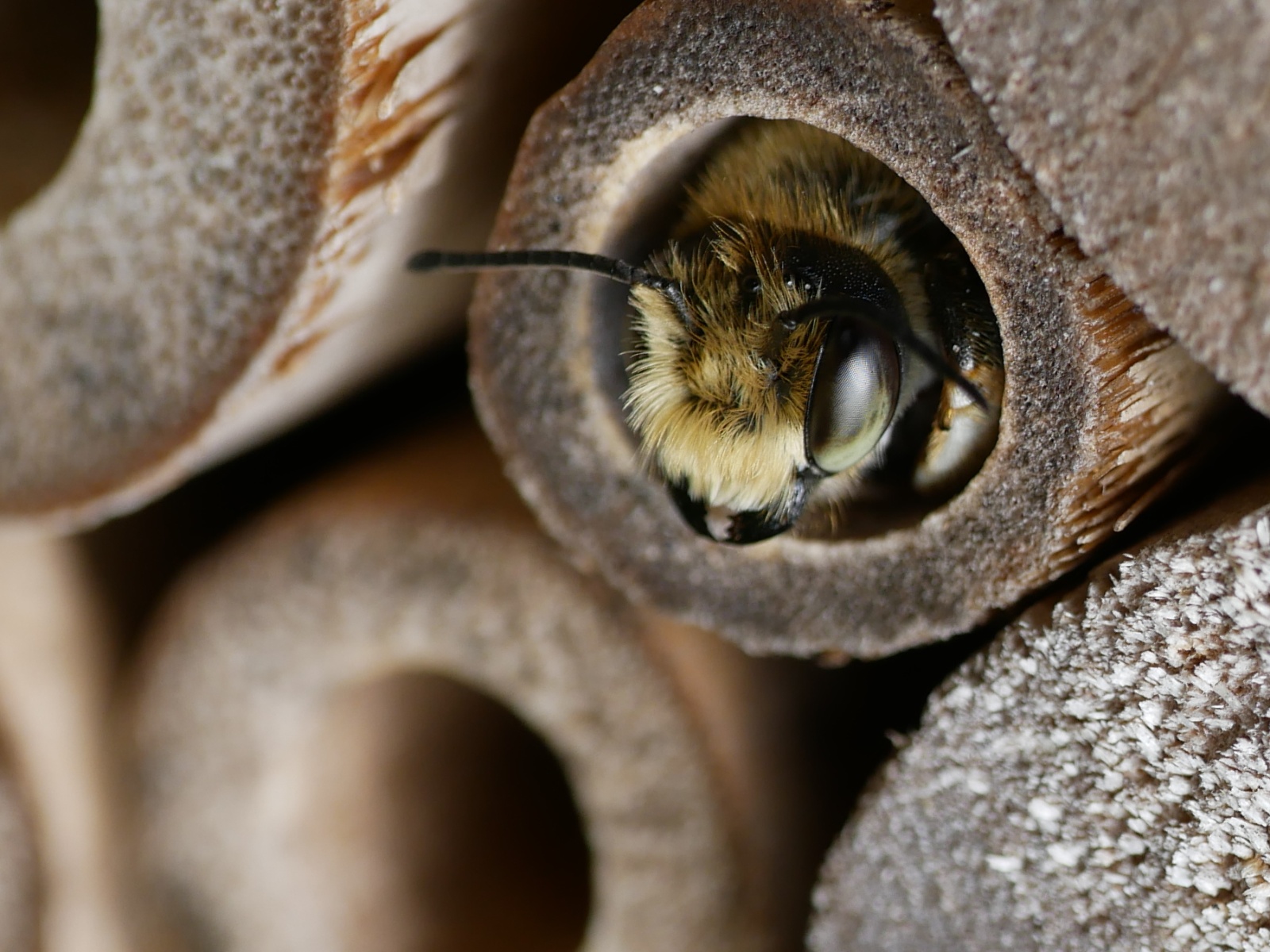
Solitary stem lovers
It is easy to offer common species such as mason bees, heriades or potter wasps horizontal nesting stalks or appropriate tunnels. Always grind the cutting/drilling edges nice and smooth so that visitors’ wings are not being damaged!
Wood with holes
- Discarded and untreated
- Preferably hardwood (does not resinate)
- Drill holes in longitudinal wood with a distance of 1 – 2 cm to each other
- Do not drill into the end grain, but across the annual rings (reduces cracking and mold in the brood)
- Drill holes are ideally between 3 and 9 mm wide
- The depth of the holes should be at least 10 times the width of the hole
Hollow stems such as bamboo and reed
- Use intact, continuous stems
- Cut reeds with secateurs, bamboo with a fine saw
- Stems should be closed at the end. To do this, either cleverly use the natural thickening (knots) of the stems or stick the tubes into a clay backing board or glue them to a wooden backing board with solvent-free wood glue
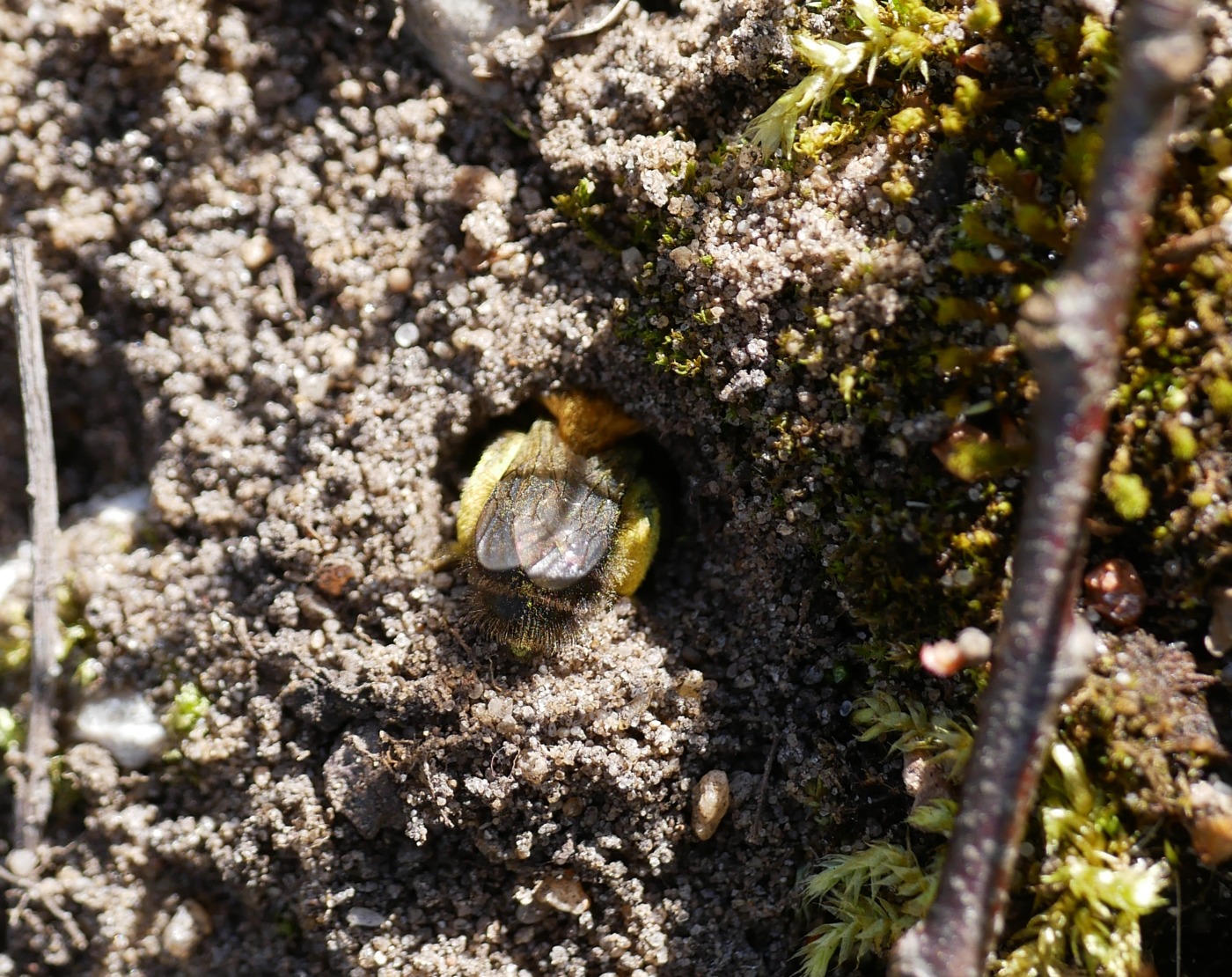
Soil and wood
This should be considered if you want to offer more nesting options:
Soil
- Dry and sandy
- Sunny location
- Do not dig here or disturb the ground in any other way
- Not at all to sparsely overgrown
- Some thorn branches (e.g. blackberry) laid loosely over it, makes the spot less attractive for cats and other animals
Wood provides shelter for many species and nesting sites for some.
Deadwood
- Stored sunny and dry
- Offer vertically
- Carpenter bees can even build their own nest passages into the wood and prefer dead fruit trees for this
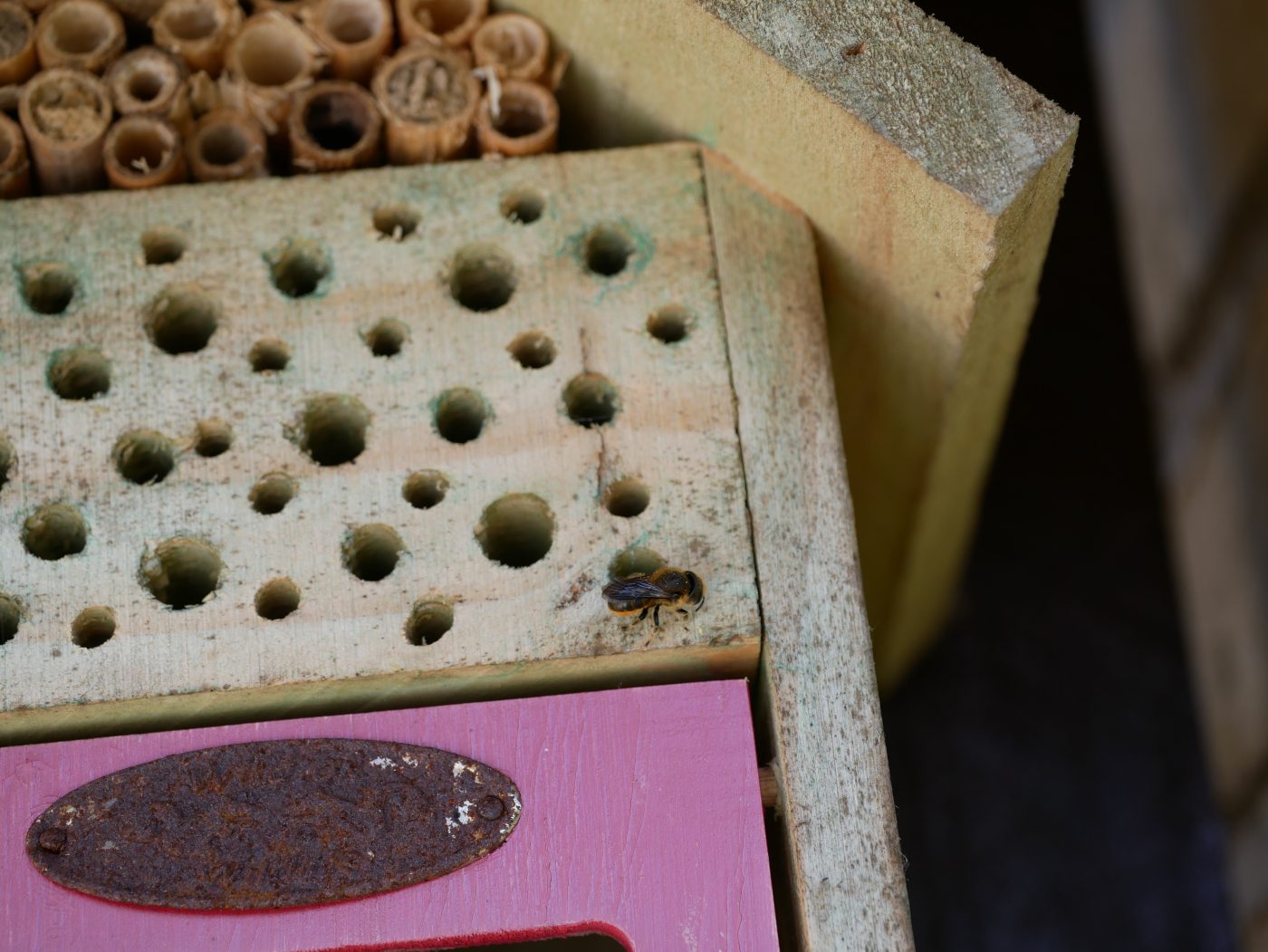
Maintenance of the nesting site
At least once a year you should check your nesting site for damages and repair them if necessary.
Please be very gentle with all activities involving a bee hotel that is already in use. Especially during the first weeks after eggs have been laid into it (generally between March and September) concussions of the hotel should be prevented. If shaken the bees’ eggs could fall off their pollen storage and the hatching larvae could starve to death.
Here we list some advice for the maintainance of your nesting sites:
Wooden nesting aids
- If the openings of drilled holes are not fully closed or their seals are broken, they can be emptied and cleaned with a screwdriver or the material can be completely renewed.
- If most of the holes are still sealed, there is nothing to be done.
Stems
- Stiff stems (e.g. bamboo) can be cleaned with a screwdriver.
- Soft stems should be replaced when they start to fray out.
Clay nesting aids
- A brick trowel can be used to renew pieces that have been fallen out of the hotel.
- In general these kind of nesting aids have the longest life time.
Nesting aid cleaning
The closures of the nesting passages should not be scratched or even drilled open to clean the them. Different types of bees live at different times of the year and so it is possible that offspring will still hatch, even thoug it seems that there is no life in the hotel. However, it can happen that bees die in one of their developmental stages and are therefore no longer able to open the nest entry.

This tip can help: In the first winter after the nesting aid has been set up, the tunnels that were closed that year can be carefully marked (e.g. in yellow). Strong watercolors and a fine brush are ideal for this, because no pressure should be exerted on the often porous nest closure. In the coming year, where the brood is intact, it breaks through these seals and hatches. New nests are created that do not bear the marking from the previous winter. Now it would be unclear which nests are old and which are new. But if you check the nesting aid again next winter and there are still yellow markings, it becomes clear that this offspring will not hatch anymore and you can carefully clean them.
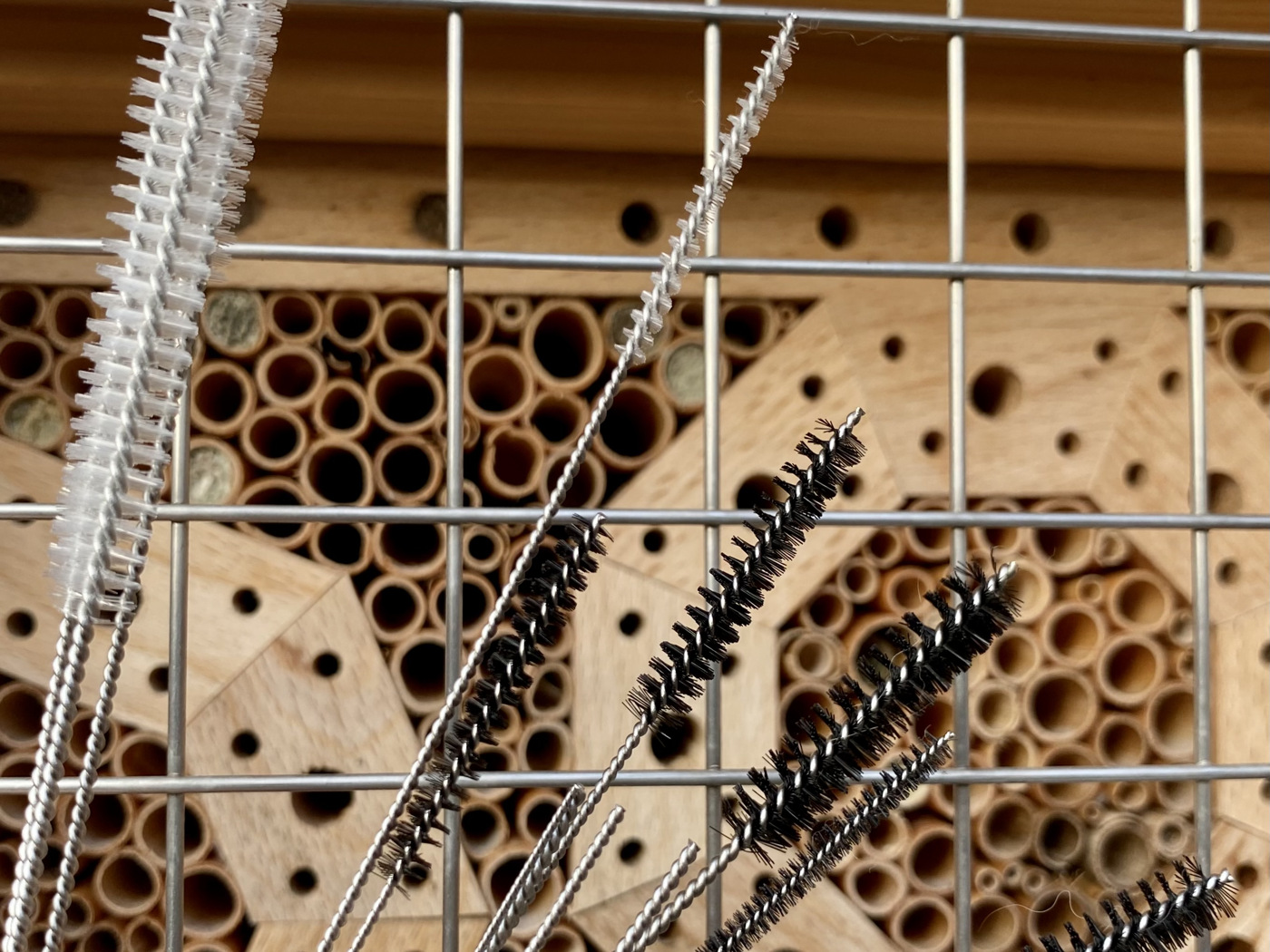
Small brushes for glass or metal straws are suitable for cleaning. Annual cleaning of the tubes is absolutely not necessary. When checking in the second winter, you can also leave the yellow caps in place, because some bee species clear tubes independently and clean them before using them. Newly added closures could then be marked with a second color (e.g. blue) to keep track of the age of nest sites. The wild bee hotel could be kept in operation by cleaning every 2-3 years and the loss of nesting sites could be minimized.

Inns for more helpers
Not only bees need a house, but also other beneficial insects such as ladybugs and butterflies. And these can also be helped with the design of your garden paradise. Ladybugs, for example, are plant protectors by feeding on lice and thus ridding the plants of them. Like bees, butterflies are pollinators and help your plants to reproduce and improves your yield. Therefore, we should create a new home for them, too!
We have put together some building instructions below that are suitable as different pollinator and beneficial insect shelters:
- The classic hotel for wild bees
- The royal residence for the bumblebee
- The small sandarium for the digger
- The simple solution for stem-loving do-it-yourselfers
- The quarters for the butterfly
- The inn for the ladybug
- The hoverfly lagoon

Digression: Bumblebee houses
Bumblebees differ greatly from other wild bees in terms of structural and site-related needs. On the one hand, this is due to their greater need for space, as they are not loners, but live in a colony of several hundred individuals that must fit into the nesting space.
On the other hand, the bumblebees with their fur are adapted to rather cool regions (they are not found in the equator region) and can always warm up well in the community. However, it is more difficult for them to keep their nest cool enough. To do this, they naturally look for nests that are as shady as possible, ideally underground. Why is overheating bad for their nest? Because, like the honeybee, they build honeycombs out of wax, which melt when the temperature is too high. This does not only destroy their supplies, but also their offspring.
For these reasons, homemade or purchased bumblebee boxes should always be placed in the coldest part of the garden. Ideally, walls, trees, etc. shade them. During summer heat waves, experienced bumblebee friends put up parasols or attach cooling elements from the outside. The bumblebees’ only means against the heat is to use their wings to blow wind into the nest. We can support them by offering them a house with as many ventilation holes as possible.
However, each additional opening of the box increases the risk that the bees’ archenemy, the wax moth, will enter the nest and destroy the colony. To prevent this, all ventilation holes should be provided with the finest mesh (e.g. pan splash guard) and the entrance should have a wax moth proof bumblebee door.